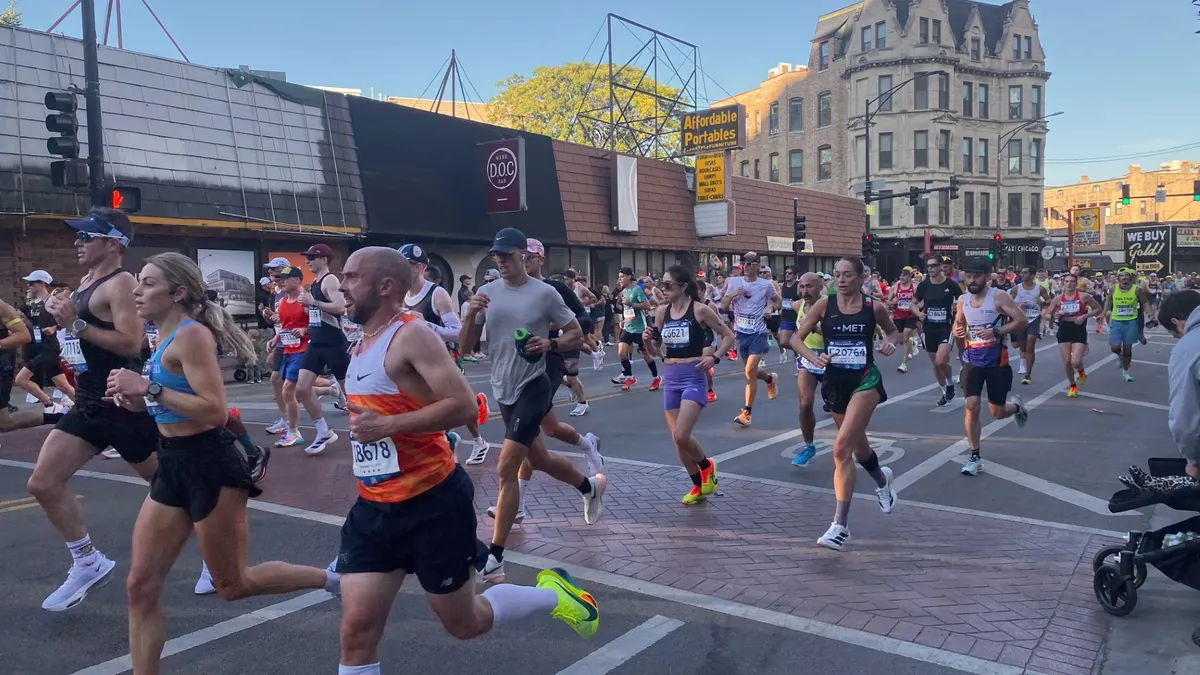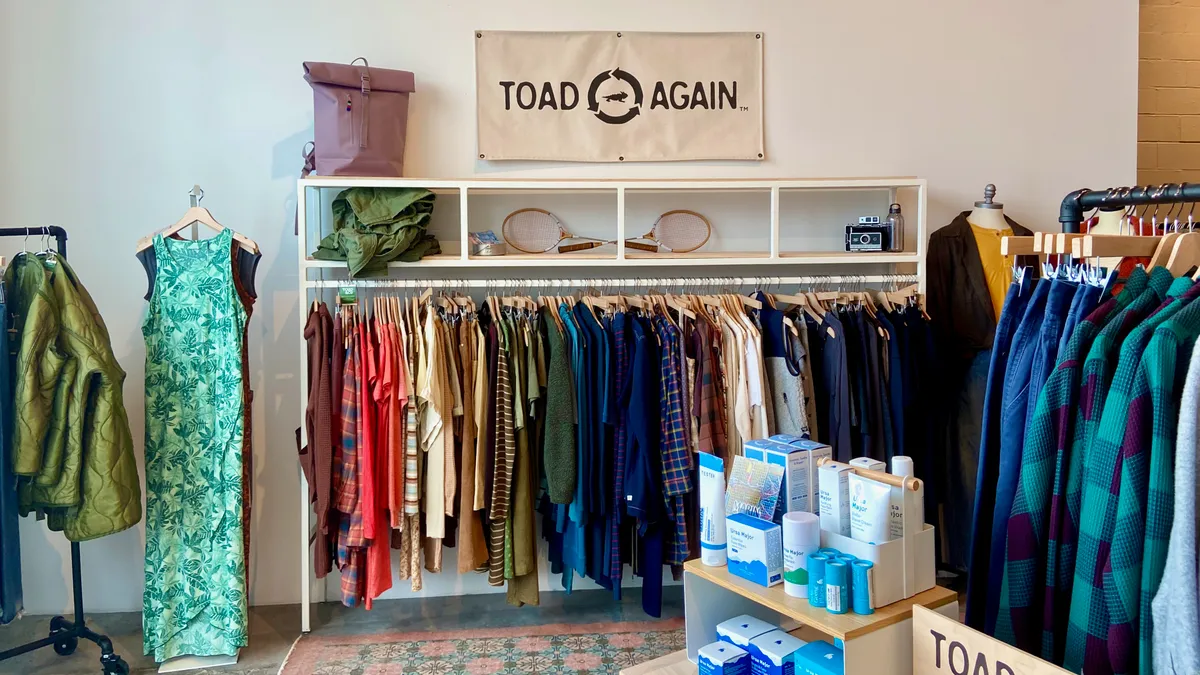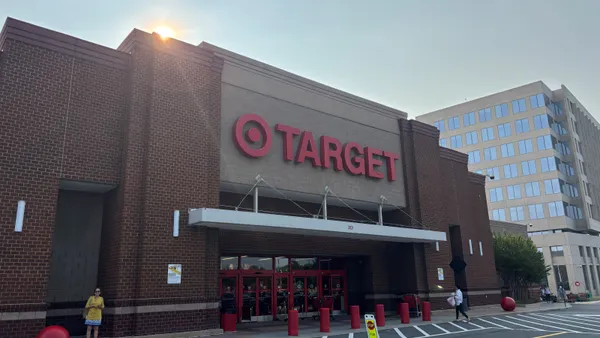Except for that one new bookstore in Seattle, Amazon doesn’t need to worry about decking out shelves or doors or parking lots for the holidays, unless it wants to cheer up its many warehouse and fulfillment workers.
And there are more Amazon warehouse shelves and buildings in general these days, as the e-retail giant has been expanding its network in an effort to streamline its logistics. Going into the holidays, the company is well positioned, considering the boost it got from its own manufactured mid-summer Black-Friday-like birthday celebration, Prime Day.
That day gave it not just a nice revenue bump the following quarter, but also a bunch of new Prime members, whose free shipping perks will come in handy right about now.
"We are in good shape for the holidays and ready to go," Amazon CFO Brian Olsavsky recently told the Associated Press.
So while Amazon may not have a store Santa or even store shelves, going promotional is one of its most beloved holiday traditions.
The elves are at Amazon
Santa may be coming to a mall or a store near you soon, but the elves, apparently, are at Amazon.
That is, in contrast to other major retailers, which are holding seasonal hiring steady, Amazon is taking on 25% more workers than last year. That’s 100,000 seasonal jobs that don’t include the 25,000 workers Amazon has hired this year.
Adding in the capacity it’s built this year, Amazon now has 104 facilities in North America alone, according to ChannelAdvisor.
“Amazon is very far ahead of any other retailer in the build out of e-commerce oriented logistical infrastructure,” ChannelAdvisor CEO Scot Wingo wrote on the company’s blog last month. “Amazon now has the ability to put millions of products miles away from a large portion of the US population. In a world where selection/assortment, fast/inexpensive shipping matter to the consumer, Amazon has built a huge competitive moat that is ten times larger than the nearest competitor.”
The disadvantage of pure-play
Still, Santa himself will be at the mall or in stores, and the fabled ho-ho-ho, plus other jazzy, fun holiday events, can be a huge draw. Half of shoppers with children 13 years old or younger go to the mall just to visit Santa, according to new research from the International Council of Shopping Centers. And then they shop.
"Wal-Mart is starting to feel the customer attrition to Amazon, which doesn't have the huge overheads that Wal-Mart does,” Hitha Herzog, chief research officer at H Squared Research, told NBC News. “And even though it's a gimmick, Santa always results in more foot traffic. Any time you give people a reason to come to the store other than, for example, to buy a television, it's always going to be a draw. When you have someone stay within the confines of your store for a longer time, the percentage of purchases can increase tenfold.”
Santa is just one holiday-edition example of the way that brick-and-mortar-centric retailers have learned to use their physical stores to their advantage, blunting e-retailers’ price advantage with matching policies, for example, and using stores to offer a variety of fulfillment options. ChannelAdvisor’s Wingo says that Amazon may still have them beat, however, when it comes to logistics.
“Buy online, pick-up in store (BOPUS) and Ship from Store are interesting innovations, but they do not offer nearly the same level of selection and efficiency that Amazon’s logistical network provides,” Wingo says.
Brick-and-mortar experiment
What about the customer experience, though? Even Amazon has been finally lured all in to physical retail, just this month announcing the opening of its first-ever bookstore in Seattle, Amazon Books. The well appointed space appears to be an experiment for the company, which says it will be collecting data and learning from sales and interactions with customers. The store features hardcover books and the company’s signature Kindle devices.
Amazon Books may be more a sign of the company’s willingness to innovate than any real sign that it will morph into a brick-and-mortar retailer in any major way, says Kurt Salmon Digital VP of client services Andy Wong, who has been working with several retailers on omnichannel and digital efforts.
“I’m not sure Amazon can figure out brick and mortar. What I’ve discovered, coming from the world of e-commerce, is that running stores is hard,” Wong told Retail Dive.
Amazon search is the Amazon Santa
But Amazon does have something that brings people to its site for one reason, and has them staying to shop. Its search reach is bigger than many may realize, with more (44%) shoppers searching for products on Amazon than on search engines (34%) or retailers’ sites (21%), according to research from big-data marketing company BloomReach. That’s a big jump from three years ago, when Forrester Research pegged Amazon’s search at 30%.
And the vast majority — 75% — of consumers said Amazon does best at personalizing their shopping experience. Two-thirds say that can’t fathom why their favorite retail sites don’t offer the same level of personalization.
“For a lot of people who want to do product research online you go to Amazon because they have information about every product in the world,” Jason Goldberg, VP of commerce for digital marketing firm Razorfish, told Retail Dive. “So Amazon has a huge head start, and that’s how Amazon becomes the online shopping destination.”
Ready, with bells on
It's probably safe to say is that Amazon is ready for the holidays. The retailer has been putting a lot of effort into priming its pump — that is, finding excuses to extend flashy one-day perks to Prime members (first its big birthday “Prime Day” sale in July included free trial membership, then a price break on memberships to celebrate its Emmy wins.) It's all an effort to expand its base of extremely sticky, higher spending Prime members.
The site has launched its Black Friday page already and is promising “tens of thousands” of discounts between now and Dec. 22, with an emphasis on tech. Some discounts are steep — some cameras and computers are on sale on the site for 70% off, for example.
The early launch may also help Amazon spread out its logisitcs, which, even with its formidable network, can suffer severe crunches, says Terry Hunter, VP e-commerce and client strategy at ecommerce solutions firm Astound Commerce.
“This approach makes sense for retailers selling the same stock levels at the discounted rate," Hunter told Retail Dive in an email. "But if you end up shifting more stock at a lower margin, then are you just eating into your revenue? Part of the reason Black Friday works so well is the excitement built around it, so is three weeks too long a period to sustain the hype and will consumers lose interest?"
"Amazon must feel it’s worth the risk. The online retailer received orders for more than 5.5 million goods on Black Friday last year, selling 64 items per second. The really interesting comparison for Amazon this year, though, will be total sales in November compared to last year."
So, while festive decorations and the convivial atmosphere are fun at the holidays, discounts may be what it really comes down to for many shoppers. Retailers have been working hard to steer shoppers away from discounts, and holiday bling and Santa visits may seem like shiny objects.
But consumers aren’t likely to be easily distracted from what has become an expectation: holiday discounts, well before and after the Black Friday-Cyber Monday weekend. A survey released last month from PriceWaterhouse Coopers found that shoppers are keeping last year’s steep discounts in mind, and that they’re expecting good deals again this year. Some 87% of shoppers say price will be the biggest factor in their holiday purchase decisions, up 3 percentage points from last year.
"The consumer has been permanently conditioned to expect significant discounts," according to PricewaterhouseCoopers’ U.S. retail and consumer Steven Barr. "Since the economic recovery has been sluggish and episodic, retailers can come to this season with strategies to not go promotional, but it only takes one or two to begin going promotional.”






















